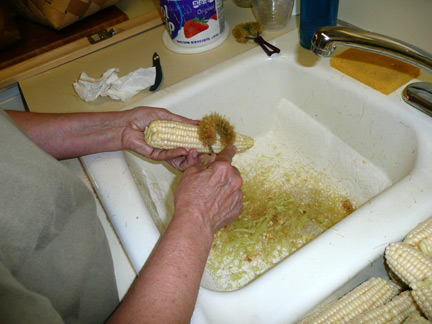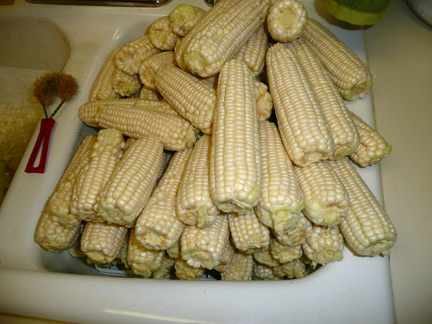August 2014 Newsletter
Click here to view this newsletter in a .pdf with a white background for easy printing. Ambling Into August
With that in mind I applied for a John Daniels Research Fellowship at the National Sporting Library & Museum. It was my good fortune to have the fellowship committee approve my application, and July found me settled in at the NSLM. They have a small cottage on the grounds, complete with kitchen facilities and Internet access, where fellows can stay. An added bonus for me was the absence of a television. Two weeks without daily exposure to depressing news, dire warnings of global warming (right now we’re in the third day of most pleasant weather here and no doubt Al Gore would be appalled), and national foolishness was a tonic in and of itself. Middleburg is a lovely little town, ideally suited for early morning or evening walks, and I was out and about early daily for a bit of exercise. Mainly though, I beavered away in the library. I knew that the man who had been the key philanthropist in creating the fellowship program, John Daniels, had donated an exceptional collection of Rutledge materials to the NSLM. I had seen the books back in the 1980s when I met Mr. Daniels, and the NSLM’s holdings are also available on line. In other words, I knew there was plenty of material directly related to my Rutledge biography awaiting me. What I didn’t realize, and it was a most pleasant surprise, was the extent of the NSLM’s holdings of old sporting periodicals. I knew they had long runs of equestrian-related magazines, but the icing atop my research cake was a complete holding of the reprinted version of Shooting & Fishing magazine, many volumes of All Outdoors, a long run of The American Field, and solid holdings of several other obscure sporting magazines. I was able to dig through these volume by volume, year by year. That is the only really satisfactory approach for periodicals which have no indexes, and I came away with all sorts of useful information. Some of it dealt with Rutledge but I also found articles by others in whom I have an interest including Horatio Bigelow, Nash Buckingham, Aldo Leopold, Harold Sheldon, Horace Kephart, and especially Charles Jordan. The latter wrote most of what was the first book on turkey hunting. It is invariably credited to Edward A. McIlhenny, but in time I plan to show, maybe with a book consisting of Jordan’s original articles which McIlhenny used along with some ancillary material, why Jordan deserves a great place in the history of sporting literature than he has been given. To top all of this off, I discovered that a gentleman whom I have known for years and who is one of the finest students of sporting literature living today, Duke Biscotti, had donated a virtually complete collection of Meadow Run Press books to the NSLM. For those of you familiar with the heralded Derrydale Press from yesteryear, Bill Trego’s Meadow Run Press (which operated for the better part of two decades from the latter part of the 20th century and several years into the 21st) is the modern equivalent. All of this gave me material for several book columns for Sporting Classics magazine, and I’m now at the point on Rutledge where the only major hurdle remaining is his personal papers at the Caroliniana Library in Columbia, S.C. For now though, suffice it to say I was mightily impressed with the NSLM and the adjacent Museum, where I had a delightful “stroll through” with the curator. Everyone there, from Executive Director Melanie Meadowes on down the line, was the essence of helpfulness to me. I don’t know when I’ve spent a more productive two weeks. The experience was a grand reminder of how a good stint of concerted research, devoid of interruptions, can get the creative juices flowing. Perhaps two final points will summarize the experience. I came back home with more drive and literary determination than I’ve had in years, and one of the first things I did upon my return was to become a member of the NSLM. If you are ever in the Middleburg area and share even a modicum of my interest in sporting literature and the art of sport, I strongly recommend a visit. Full details are available at www.nsl.org. One other Rutledge-related thought. If you haven’t already let me know you’d like to be notified when the Rutledge biography appears, just send me an e-mail to that effect and I’ll make sure you are on my “let folks know” list. I would note that it will likely be another 18-24 months, at best, before the book appears. I’ve still got a good deal of digging and writing to do and university presses (I plan to submit the manuscript to the University of South Carolina Press since they’ve done such a nice job with the Rutledge anthologies I’ve edited) work rather slowly. That’s in no small measure because they are meticulous, and that’s a real plus in my book. As far as my upcoming schedule goes, this month will be one of staying in front of the computer and focusing on Rutledge. Of course there are always newspaper columns due, a story assignment or two to handle, and more yard and garden chores than I can possibly handle in the way I should. One highlight will be an upcoming meeting with a descendant of Sam Hunnicutt, a true old-time mountain man who lived in the heart of my native Smokies and who was a legendary figure as a hunter. He even wrote an extraordinarily scarce book about his experiences, Twenty Years Hunting and Fishing in the Great Smokies. Old Sam was a surefire example of what folks where I grew up call a “rounder,” and I look forward to hearing some of the family tales along with sharing some of my knowledge of Sam. Incidentally, he will be the subject of a chapter in what I plan as my next book once the Rutledge project is done. It will be the first volume in a projected trilogy on mountain people, places, and pastimes. The initial volume will contain detailed biographical profiles of folks—some famous, some infamous, and some little known—who lived in the Smokies. Then, come early September, I’ll be spending a few days in Haywood County, N.C., on what writers sometimes call a “fam” (for familiarization) trip. Headquarters will be the famed Cataloochee Ranch and we’ll be doing everything from some hiking to sampling local craft beers, from visiting small farms and apple orchards to savoring the food and hospitality of communities in the area. It’s a part of the world I know pretty well (since it is right next door to my native Swain County), and I’ve fished there quite a bit, known a fair number of local folks over the years including the legendary moonshiner, Popcorn Sutton, and even done a fair share of square dancing and clogging back in the days when I could kick up my heels. It promises to be great fun. Enough of that though—let’s turn to some thoughts on August as I know and have known it. Since I spent a goodly portion of July at the National Sporting Library & Museum (NSLM, see above) researching on Archibald Rutledge, it seemed appropriate to offer a selection of his books as this month’s special. I’ll sell any of the four anthologies of his work published by the University of South Carolina Press which I edited for $25 postage paid. That’s a saving of $10. Of course I’ll gladly sign and inscribe them.
Musings, Memories, and “Making Do” In August Honesty compels me to admit that August has never been my favorite month. Indeed, were I pressed to rank the twelve months of the year in terms of which ones I like best, there would be a close race between August and February to finish dead last. In my part of the world, and it was true of boyhood years in the Smokies as well as my current residence in the piedmont region of South Carolina, there’s a lot to dislike about August. It brings in the “dog days” of summer with heat, humidity, pests such as mosquitoes and yellow jackets approaching or being at their worst, every problem imaginable plaguing the garden, fishing generally in the doldrums, and a longing for cooler weather and all the myriad delights it brings. Yet as I grow older, contrary to what is the supposed tendency for advancing years, in many senses I become more of an optimist. Some of that optimism focuses on the positive things associated with the month of August. It sees many garden vegetables reach their peak of productivity—okra loves the heat and will produce like there is no tomorrow as long as it is cut regularly, crowder peas seem to go from purple blooms to swollen yellow pods prime for picking in no time at all, there are more luscious tomatoes than a body knows how to handle, and corn has peaked.
But these are merely the peak of the massive culinary mountain provided by corn. There are true roasting ears cooked in the shuck atop a grill, the enduringly delicious wonder of a pone of cornbread made from stone-ground meal, vegetable soup (or vegetable beef or venison soup) featuring a liberal infusion of corn, corn dodgers, corn cakes, corn fritters, corn patties topped with grated cheese just as they are ready to remove from the skillet, and much more. Corn was a staple of life for mountain folks where I grew up, and it fed not only humans but their two primary sources of meat, pigs and chickens. The fodder made prime feed for the family milk cow.
While I’m still on food thoughts associated with the month of August,
I’ll list a few things I’ve loved in the past but haven’t eaten in
years. Some of this comes from the realities of being somewhat removed
from the lifestyle I knew as a boy while another part of the equation
involves the realities of practical diet dictated by wider eating than
was my wont in greedy-gut days of yore.
That’s enough on things I haven’t eaten in a ‘coon’s age. I’ve already written myself into a state where my salivary glands have gone into involuntary overdrive and my stomach is growling. Mind you, I know that hamburger gravy atop big slices of Cherokee Purple tomatoes is on the supper menu, not to mention an ear of corn and slices of cucumber, so I reckon I’ll barely be able to hold out until the table’s laid and the fixin’s await me. One final thought. If August causes you anxiety, there are some things to soothe your troubled soul. Count the time between katydid cadences and figure out how long it will be until the first frost. I “disremember,” as Grandpa Joe would say, the formula, but you can look it up on line. I’ve tried it in the past and this particular bit of weather wisdom seems pretty accurate. Another comforting thought is realization that dove season is less than a month away, and if the heady smell of burnt gunpowder drifting across the seer fields of September doesn’t lift your spirits, you simply don’t like a red-hot, firecracker of a dove shoot the way I do. Or you can brave the heat and get out to do a bit of pre-season preparation for deer hunting—clearing shooting lanes and paths, planting food plots, placing stands or checking out existing ones, and the like. Any of those beats the dickens out of wallowing around in the house whining and feeling sorry for yourself. Or, you can always read a book – any of the Rutledge anthologies offered as this month’s special provides some first-rate armchair adventure. Momma’s Fried Corn Cut three or four thick slices of streaked meat (you can call it steak-o’-lean, side meat, salt pork, or any of a number of other names, but to me it has always been streaked meat for the simple reason that is what folks called it in my boyhood) into a large skillet. Fry the streaked meat until crisp and brown. Set the meat aside on paper towels to drain and retain the hot grease. If you have too much grease pour some off and retain for use in cooking and seasoning other dishes such as green beans, crowder peas, or butterbeans. Pour corn which has previously been cut or grated from the cob into the hot grease. Stir steadily until the corn is cooked and serve piping hot. A piece of the streaked meat crumbled atop a serving of corn is right tasty, and the same holds true for a juicy tomato cut into chunks to top the corn.
I hadn’t originally planned to include this recipe, but the smell of cooking corn and discussing it at the lunch table led me to change my mind. It is simplicity personified, although as is so often the case I can’t offer specific measurements when it comes to the ingredients. Place freshly grated or cut from the cob corn in a pot of suitable size. Add half-and-half and butter and simmer on slow heat, stirring to make sure it doesn’t stick, until done. Salt and pepper to taste. You can eat it hot from the pot or freeze. My wife put up a bunch of freezer bags today and there will be some feasting come cold weather. I might add that if you slip up and let corn get a little too big and it loses its milkiness and becomes starchy, this is a good way to utilize it. The half-and-half and butter make up for some of the sweetness and moist texture you have lost, and corn in this stage is much better fixed this way than served on the cob. Venison Gravy and Tomatoes This is a great way to enjoy surplus ground venison as you look ahead to another season. Just brown the venison and then add milk and flour, stirring steadily, to make a milk gravy. If the venison is quite lean you will need to add a bit of cooking oil (or here’s another good use for the grease left over from frying streaked meat). Cook to desired thickness and pour over juicy slices of tomato. You can make an open face sandwich if you desire, but just the venison gravy and maters makes mighty fine fixin’s. Thank you for subscribing to the
Jim Casada Outdoors
newsletter. |
||||||||||||
|
Send mail to
webmaster@jimcasadaoutdoors.com with
questions or comments about this Web site. |

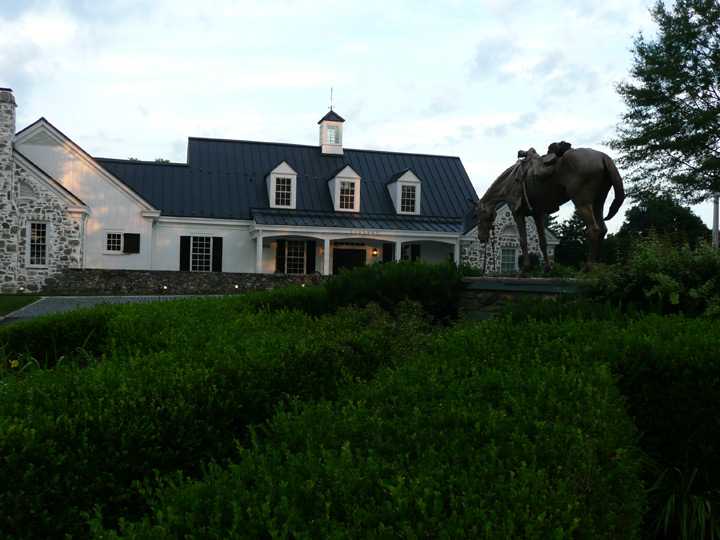
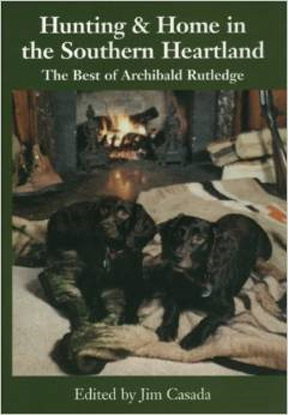
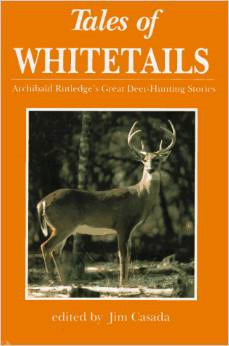
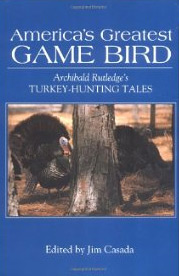
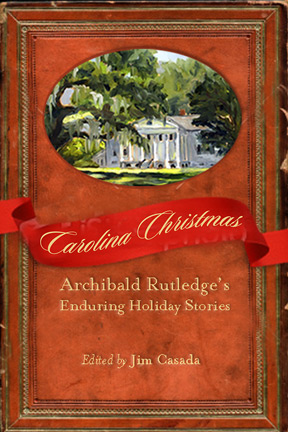
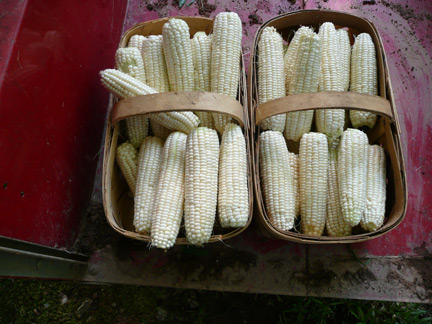 I want to spend a bit of time on corn. Maybe that’s because this morning
I gathered and shucked basket after basket, and as these words are being
written my good missus is beavering away in the kitchen putting up
creamed corn. This involves a lot of work, but man, is the end product
fine. Our granddaughter thinks a Thanksgiving or Christmas without a big
bowl of creamed corn (Ann makes it with half-and-half and a liberal dose
of butter) just isn’t a proper holiday. I love creamed corn as well, but
it is not my favorite way to eat this versatile vegetable. Close to the
top of the list would be what Momma always called fried corn, although
in truth stewed might be a bit closer to the mark (see recipe below).
Just ahead of fried corn, and my favorite of all the many ways to enjoy
corn, would be a prime ear of Silver Queen at its peak of milky
sweetness, served as a roasting ear (again, the description of
“roasting” is misleading, because it is actually boiled). To my way of
thinking the only thing finer than a roasting ear slathered with real
butter and dusted with salt and black pepper is two ears done that way.
I want to spend a bit of time on corn. Maybe that’s because this morning
I gathered and shucked basket after basket, and as these words are being
written my good missus is beavering away in the kitchen putting up
creamed corn. This involves a lot of work, but man, is the end product
fine. Our granddaughter thinks a Thanksgiving or Christmas without a big
bowl of creamed corn (Ann makes it with half-and-half and a liberal dose
of butter) just isn’t a proper holiday. I love creamed corn as well, but
it is not my favorite way to eat this versatile vegetable. Close to the
top of the list would be what Momma always called fried corn, although
in truth stewed might be a bit closer to the mark (see recipe below).
Just ahead of fried corn, and my favorite of all the many ways to enjoy
corn, would be a prime ear of Silver Queen at its peak of milky
sweetness, served as a roasting ear (again, the description of
“roasting” is misleading, because it is actually boiled). To my way of
thinking the only thing finer than a roasting ear slathered with real
butter and dusted with salt and black pepper is two ears done that way.